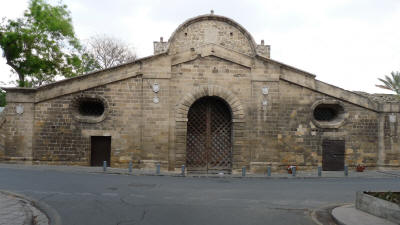Famagusta Gate
Nicosia, South Cyprus
 |
| Famagusta Gate |
Famagusta Gate is the largest and most impressive of the three gates of the walls of Nicosia, Built in 1567 by the Venetians, and originally called the Porta Giuliani after its designer, it served travellers entering and leaving the city from the east of the island. The outer entrance is a simple gateway, situated just under the Caraffa bastion, which leads into a long passageway through the walls to the much larger and more impressive inner gateway. Midway along the passageway is a cupola in the roof, which provided somewhat meagre illumination and was a place where food vendors would wait for weary travellers.
During the early Ottoman period, only Turks were allowed to pass through the gate on horseback, while Christians and other foreigners were obliged to walk. The gate was locked at sunset and reopened at sunrise and remained closed on Fridays, the Muslim holy day, to allow the guards time to pray.
During British Colonial times the spacious rooms of the gate served as a warehouse for fuel and other materials. Even though a gradual process of preservation was carried out from 1934 to 1981, humidity problems prevailed, and the Gate fell into disuse.
In 1980, the Municipal Council of Nicosia decided to restore the gate and re-use it as a cultural centre. The entrance floor was covered with a cement bed and the area in front of the gate was covered with cobblestones. The internal walls and the roof were cleaned and then insulated. Air conditioning and ventilation systems were installed under floor. The rooms were provided with general lighting and special lighting for the exhibits. The passageway and two side rooms can operate as a whole, or as three individual areas.
Restoration was completed in 1981, and since then the Famagusta gate has become a busy venue for exhibitions, and this has helped regenerate this area of old Nicosia.
See the location in Google maps
Back to South Nicosia Index